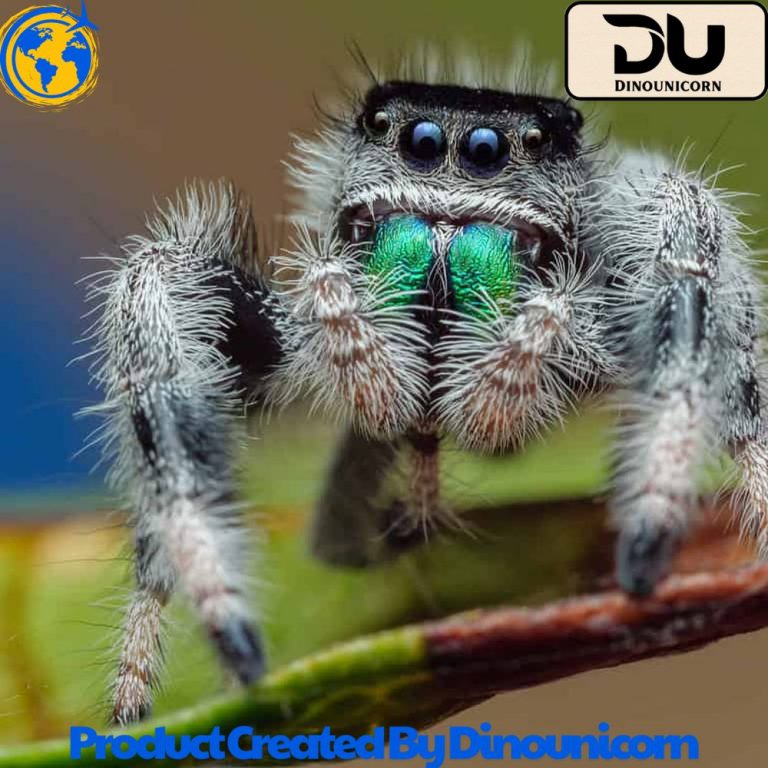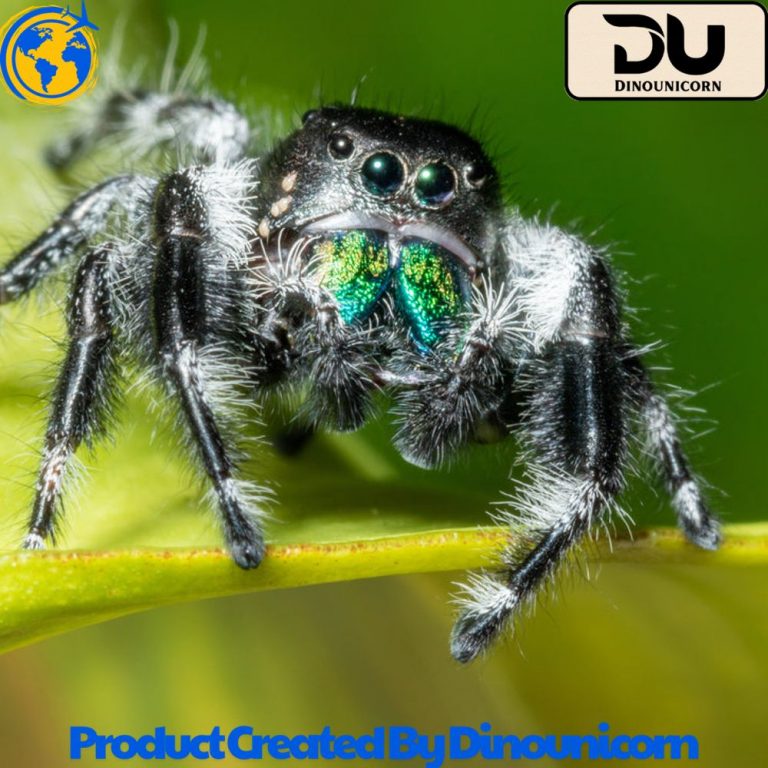Blog
How Long Do Jumping Spiders Live?
How Long Do Jumping Spiders Live?
Jumping spiders are among the most fascinating and widely recognized species in the arachnid world. Their distinctive ability to jump, along with their curious nature and often vibrant appearances, make them popular subjects for study and observation. If you’re wondering, how long do jumping spiders live, you’re not alone. Many people are curious about their lifespan and the factors that influence it.
In this article, we will explore the lifespan of jumping spiders, including how long they live in the wild and in captivity, as well as factors that affect their longevity. We will also cover the life expectancy of various jumping spider species and answer some frequently asked questions to give you a comprehensive understanding.
The Lifespan of Jumping Spiders
How Long Do Jumping Spiders Live in the Wild?
The lifespan of jumping spiders in the wild can vary significantly depending on various factors, such as species, environmental conditions, and food availability. On average, a jumping spider’s natural lifespan ranges from six months to two years. However, this can vary widely based on habitat and other ecological factors.
For instance, in the wild, a jumping spider like the Phidippus species may live up to a year, while other species might have a shorter life expectancy. Factors like predators, food scarcity, and harsh weather conditions can significantly impact their lifespan.
Jumping Spider Lifespan in Captivity
When kept as pets, jumping spiders may live slightly longer than those in the wild due to controlled environmental conditions. In a home or pet care setting, a jumping spider’s lifespan may extend beyond one year depending on the level of care it receives. Pet owners can influence the jumping spider’s longevity by providing adequate food, temperature control, and appropriate habitat.
Unlike wild spiders, which may face predation and harsh conditions, jumping spiders in captivity are generally protected from environmental threats, increasing their chances of living longer.

Species-Specific Lifespan
How Long Do Zebra Jumping Spiders Live?
The zebra jumping spider (Salticus scenicus) is a common species found in North America and Europe. These spiders typically live for about one year in the wild, though their lifespan can be affected by factors such as predation, food availability, and the quality of their environment.
In captivity, zebra jumping spiders may live slightly longer, especially if they are provided with optimal conditions such as proper food and habitat. Zebra jumping spiders are also known for their distinctive black and white markings, making them a favorite among those interested in observing spider behavior.
How Long Do Garden Jumping Spiders Live?
Garden jumping spiders are commonly found in gardens, shrubs, and various other outdoor environments. These spiders are typically smaller than other jumping spider species, and their life expectancy is generally about six months to one year. In gardens, they benefit from the abundance of insects but are also at risk of being preyed upon by birds, reptiles, and other predators.
How Long Do Salticidae Live?
The family Salticidae includes all jumping spiders, and the lifespan of spiders in this family can vary significantly. On average, Salticidae species live for one to two years in the wild, although some species may live even longer in controlled environments, such as in a pet care setting.

Factors Affecting Jumping Spider Lifespan
Environmental Factors
The lifespan of a jumping spider is heavily influenced by its environment. National and local conditions, such as temperature, humidity, and availability of food, play a significant role in determining how long a spider can live. For example, in warmer climates, jumping spiders may live longer than in colder environments where food is scarcer.
Predators and Threats
Jumping spiders face many threats in the wild, including predators like birds, lizards, and larger insects. These threats can shorten a jumping spider’s lifespan considerably. Additionally, environmental challenges such as extreme temperatures, lack of food, or exposure to pesticides or other harmful chemicals can also affect their survival.
In homes, jumping spiders are typically protected from many of these threats, allowing them to live longer lives compared to those in the wild. Home environments with adequate control over temperature and food supply can make a significant difference in their longevity.

The Life Cycle of Jumping Spiders
Stages of a Jumping Spider’s Life Cycle
Jumping spiders undergo several stages in their life cycle, each of which impacts their life expectancy. The typical life cycle includes:
- Egg Stage: The female spider lays eggs in a silk sac. Depending on environmental conditions, the eggs will hatch in about two to three weeks.
- Juvenile Stage: After hatching, jumping spiders go through several molts as they grow. This stage can last anywhere from a few weeks to a few months.
- Adult Stage: Once the spider reaches adulthood, its lifespan in this stage depends on the species and its environmental conditions. Most jumping spiders live for several months in the adult stage before reaching the end of their life cycle.
The total lifespan of a jumping spider from egg to adult typically ranges between six months to two years, depending on the species and environment.
How Old Do Jumping Spiders Get?
On average, jumping spiders reach adulthood at around six months to one year. However, the age at which they mature and their overall longevity can vary based on the species. Male spiders generally have shorter lifespans than females, with males living just a few months after reaching adulthood. In contrast, females can live up to a year or more in optimal conditions.

Do Jumping Spiders Live for a Long Time?
Do Jumping Spiders Live for a Long Time?
The question of whether jumping spiders live for a long time depends on various factors. While the lifespan of jumping spiders may not be as long as other types of spiders, such as tarantulas, they can still live quite a while given the right conditions.
In the wild, their lifespan is typically about one year, though it can be influenced by environmental factors, such as availability of food, presence of predators, and weather conditions. In captivity, jumping spiders can live longer, especially if they are well cared for and protected from predators.

Frequently Asked Questions
How long do jumping spiders live in homes?
Jumping spiders in homes can live up to one year or more, depending on the care they receive and the environment inside the home. Proper food, temperature control, and a safe environment can help increase their lifespan.
What is the average lifespan of a jumping spider?
The average lifespan of jumping spiders is typically about one year, though it can vary depending on the species and environmental factors.
How long do jumping spiders live in the wild?
In the wild, jumping spiders generally live for six months to two years, with food availability, predators, and environmental conditions all influencing their longevity.
Do male jumping spiders live longer than females?
No, in most species of jumping spiders, male spiders have a shorter lifespan than females. Males typically live only a few months after reaching adulthood, while females may live for over a year.
How long do zebra jumping spiders live?
Zebra jumping spiders live for about one year in the wild, although their lifespan can be slightly longer in captivity with proper care.
How long do jumping spiders live in captivity?
Jumping spiders can live up to two years in captivity, depending on how well they are cared for. Factors such as diet, habitat, and environmental control all play a role in their longevity.
Conclusion: Summary of Jumping Spider Lifespan
To summarize, the lifespan of jumping spiders varies based on several factors, including species, environmental conditions, and whether they are in the wild or in captivity. On average, jumping spiders live for six months to two years, with females living longer than males. Zebra jumping spiders and other common species typically have a lifespan of about one year, but under the right conditions, they may live longer.
Understanding the various factors that affect their life expectancy helps in appreciating the remarkable nature of these tiny but fascinating creatures. Whether you’re observing them in your garden, studying their behavior, or keeping them as pets, knowing how long they live can help ensure they thrive.
 Skip to content
Skip to content

